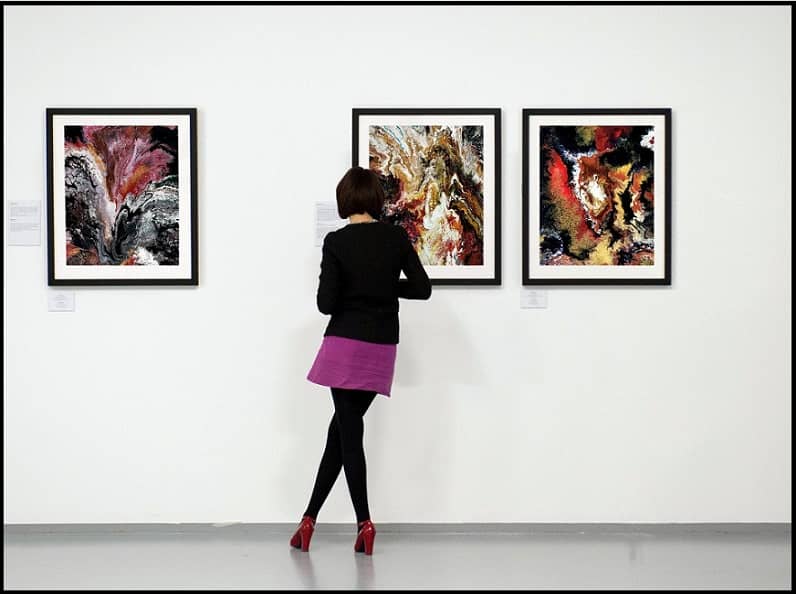Art Investment Reimagined: The Advantages of Fractional Art Ownership Online

The art market is no longer exclusive to the affluent few, thanks to the emergence of online platforms for fractionalized art trading. This innovative concept allows for the democratization of art investment, making it accessible to a broader audience. Let’s explore the multifaceted benefits these platforms, such as angelo.app/, bring to art enthusiasts and investors alike.
Democratizing Art Investment
Traditionally, investing in high-value art pieces was a privilege reserved for the wealthy. Online platforms for fractionalized art have disrupted this norm, allowing individuals to own a piece of art’s value without bearing the entire cost.
Opening Doors to the Elite World
Fractional ownership breaks down financial barriers, allowing more people to participate in the art market. By purchasing shares in an artwork, you can become a part-owner of a piece that may have been out of reach due to its full price. This inclusivity fosters a new culture of art appreciation and investment, blending passion with financial opportunity.
The Fusion of Art and Technology
Online platforms for fractionalized art are at the intersection of art and technology, providing a seamless experience for buyers and sellers. These platforms utilize cutting-edge tech to ensure security, authenticity, and ease of transaction.
Harnessing Tech for Trust and Transparency
Blockchain technology is often the backbone of these platforms, ensuring that each fractional ownership share is securely recorded and easily tradable. Smart contracts automate the buying and selling process, reducing the risk of fraud and making transactions transparent. This tech-infused approach to art trading not only simplifies the process but also builds trust among participants.
Portfolio Diversification Through Art
Investing in art has long been considered a means to diversify an investment portfolio. Fractional ownership through online platforms makes this strategy more attainable for investors who are not art market insiders.
A Splash of Art in Investment Portfolios
Fractional art ownership allows you to invest in a tangible asset that can balance out the volatility of stocks and bonds. Art often has a low correlation with traditional financial markets, providing a hedge against market downturns. By including art in your portfolio, you’re not just investing in an asset’s potential appreciation but also in its cultural value.
The Liquidity Leap
One of the main challenges of art investment has always been liquidity. Fractionalized art trading on online platforms addresses this issue head-on, providing a more fluid market for buyers and sellers.
Streamlining Sales and Purchases
With online platforms, you can buy or sell shares of an artwork much like stocks, without the need for auctions or private sales. This reduces the time and complexity traditionally associated with art sales, making it easier to manage your investment according to market movements and personal financial goals.
The Educational Aspect of Fractional Ownership
Online platforms for fractionalized art are not just marketplaces; they’re also educational hubs where art lovers can learn about the pieces they invest in and the artists who created them.
Cultivating a Community of Informed Collectors
These platforms often provide detailed histories of the artworks, biographies of the artists, and market analyses that help you make informed decisions. This knowledge-sharing aspect creates a community of collectors who are well-versed in art history and market dynamics, enriching the overall investment experience.
The Global Art Market at Your Fingertips
Online platforms for fractionalized art give you access to a global market, transcending geographical boundaries. This worldwide reach is a game-changer for the art trade.
Expanding Horizons Across Borders
Whether you’re in New York or New Delhi, you can invest in a piece of art located anywhere in the world. This global accessibility draws a diverse group of investors and collectors, increasing the liquidity and dynamism of the market. Additionally, it allows for exposure to different art movements and styles, broadening cultural understanding and appreciation.
Curatorial Influence and Expertise
Many online platforms for fractionalized art are curated by experts who select pieces based on artistic significance and investment potential, guiding users towards wise investments.
Leveraging Expert Insights
The curatorial process ensures that the art available for fractional ownership is not only of high quality but also has potential for appreciation. Experts provide analyses and forecasts, which can be invaluable for novice investors unfamiliar with the intricacies of the art market.
The Future of Art Trading
The rise of online platforms for fractionalized art trading represents the future of the art market. This model offers a sustainable approach to art investment, balancing the interests of artists, collectors, and investors.
Envisioning a New Art Ecosystem
As these platforms continue to evolve, they could potentially influence the way art is created, sold, and appreciated. They hold the promise of creating a more equitable art market, where the success of an investment is shared by a community of stakeholders, and the cultural value of art is accessible to all.
Online platforms for fractionalized art trading are transforming the art world, offering unparalleled benefits to those seeking to engage with art as both connoisseurs and investors. These platforms lower the entry barriers, provide educational resources, enhance liquidity, and offer global access to the art market, all while ensuring security and transparency through technology. As this innovative model continues to mature, it will likely catalyze a new era in art investment and enjoyment, making it an integral part of the investment landscape. By embracing this trend, you’re not just buying into a piece of art; you’re investing in a piece of history and participating in a cultural shift that redefines the value and ownership of art in the modern age.
